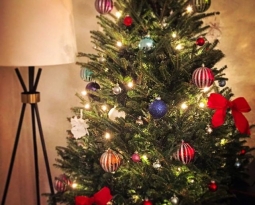Wet Heat, Dry Heat: The Northern Territory.
While the cities of Melbourne and Sydney have stolen a good deal of my attention, it was the last two trips that truly captivated my senses: Darwin and Ayers Rock. Both part of the Northern Territory, the two regions share many similarities: World Heritage protected, Aborigine-owned National Parks, visibility of prehistoric cultures and people, a tourist clientele, oppressive heat, original art galleries, and a respect for nature in all of its many forms. But, that’s where the similarities end. Darwin, part of the tropical wet, is painstakingly humid; Ayers Rock is painstakingly dry. Darwin is coastal; Ayers Rock is desert. Darwin’s Aboriginal culture is part of mainstream society; Ayers Rock’s Aboriginal culture remains invisible, confined to the bush, the outback, and the land. Differences aside, I had a similar fondness for these two very special places, vastly unknown worlds that helped me appreciate the beauty of Australia, away from the cities.
I was remiss in thinking that the tropical wet would only be represented by my sub-par experiences in Queensland’s Daintree, as Kakadu National Park (north of Darwin) was an abyss of beauty and reverential surrender to nature. A shit-kicker town dubbed “The Top End” because of its northern location, Darwin is the closest port to Asia and bustles in the way a port city does. The wharfs are active, the population is transient, and the water is a clear blue that reminds me of Bali’s southern shores, a semi-stone’s throw across the way, especially appreciated in Fannie Bay, a bit east of the city itself. I arrived during the beginning of “the wet,” a season that provides the year’s rainfall averages. Like in Port Douglas, I got lucky, avoiding the torrential floods and late day downpours associated with such a season. For that I’m grateful, as I got to explore Kakadu National Park in most of its splendor. Kakadu is in parts swampy marshlands that feed off a system of rivers flowing out into the ocean. In other parts, it is towering rock formations boasting century old Aboriginal artwork, the most beautiful (that I saw) being Nourlangie Rock, a lookout point that encompasses as much of Kakadu that the eye can see. The juxtaposition of the dry regions and the wetlands are remarkable, the colors of the vegetation are constantly changing while the colors of the rocks completely astounding, and the variety of wildlife interesting (and endangered, most). Who knew bird watching could be so worthwhile?
Begrudgingly, since I was short on time, I went on two tours in Kakadu, and both were absolute pleasures, restoring my faith in the tour guide. Kerry, the park ranger, is my new email buddy. Go figure. Granted, the heat was uncomfortable and the entire group was drenched throughout—seats of pants soaked through, darkened t-shirts clinging to torsos, matted ponytails, glistening forearms. And the flies! Australian flies are the true definition of pest. They obstinately refuse to be dismayed by swats, coming back and attempting to probe any exposed orifice for a bit of nutrition. It’s insanity. The park rangers wore nets over their faces; it’s that much of an issue. Had I seen a fly net hat, fashion victim or not, I’d have purchased it! To further illustrate the heat, any movement from indoor to outdoor venues in Darwin necessitated a 15-minute holding period for picture-taking, as my camera fogged and needed a brief acclimation before use. It’s unbearable weather. Tip for future travelers: come in the dry.
My second tour was a crocodile-feeding boat cruise. I had been foiled in Cape Tribulation, foiled in the Kakadu wetlands, and refused to leave 6 weeks of Australian holiday without a proper croc encounter. So, I signed up for the most croc-worthy adventure I possibly could: The Adelaide River Feeding (to wild crocodiles). Using pork chops guides lure the beasts out of the water. Natural jumpers, they spring out of the water for the bait. Well…it was worth every damn tourist penny. These creatures, that look Jungle-Cruise fake, stealthily glide over to the boat, flash their crooked, sharp-toothed smile and then, spring out of the water and snap that chop! Priceless, priceless. I didn’t win the boat’s lottery to feed one myself, though was praying like a grandma on the local church’s bingo Wednesday for a score. Can’t have all the luck, I guess.
Satisfied with all of my adventures in Kakadu, I moved onto Ayers Rock, or the Red Centre as the desert outback is called. An arid, dry heat festers here, in stark contrast to Darwin’s humidity. 33 degrees in Darwin renders one sweat-soaked merely by breathing; 33 degrees in Ayers Rock is breezy, enjoyable but potentially deadly without a water bottle close at hand. The reason to come to the Red Centre is spectacular Ayers Rock, a 40 million+ year old landmass rising 1100 feet high and a 5 mile-trek around the base. Made of sandstone, Ayers Rock is a desert mystery. Why, in the middle of this red sea of sand, did this structure prevail? Aboriginal culture renders it holy; the scientific community labels it a geological anomaly, and the Australian tourist council calls it a goldmine. However you want to define it, Ayers Rock is hands-down amazing. To contemplate this massive red rock, to walk the base, follow the lines and witness the ever-changing colors that beat off of it throughout the day, is one of the more appreciated experiences I’ve had yet in Australia. But, better than Ayers Rock (called Uluru by local people) are The Olgas (Kata Tjuta), 36 rock domes of conglomerate nearby to Ayers Rock. Entrenched throughout the domes are valleys and gorges, crevasses of hike exploration, and be sure that I tried to explore every last piece of it. This was my highlight – Kata Tjuta.
In the three days that I spent in the Red Centre, I was in awe. I was reminded of Bryce Canyon – the colors are remarkably similar and I saw every sunrise and every sunset over these formations, one more spellbinding than the next. After climbing Ayers in early morning, I spent a day wandering around by myself, in the heat of midday, prompting concern from the shuttle driver who dropped me off. Kata Tjuta, however, defies conventional descriptions of beauty. I initially went with out there with a tour but during the first 15 minutes my guide let everyone know we’d only be walking into and out of the main gorge as he brought the pace of a leisurely stroll down to a crawl. No way. So, I explained that I needed to stray from the group and do my own full circuit of the gorges. “I wouldn’t advise that,” said my worried leader. Noted. “What time do I need to be back at the bus?” I asked. “10:15, but you’ll never make it,” Ian doubted. Noted. Ever up for a challenge, I hiked the whole 10k circuit of Kata Tjuta, a tough, rocky, yet stunning terrain that had me panting at points, but never sweating (I love this kind of heat!). Two hours later, at 10:15 AM on the dot, I arrived back at the bus. I could barely breath through my dried out nostrils, my body was beet red, regardless of continuous SPF applications and I was out of water. But, I made it! Better…nobody else was there yet! My mission was victorious. 20 minutes went by before the Italian group I had passed along the way (turning back because they couldn’t continue forward) returned. No, no…the Americano! “You are here!” they uttered in halting English. “No way, you are here!” I won’t say I told you so, kids…
On my last night in Ayers Rock, I opted for the Sounds of Silence—a dinner under the desert stars. Owned by the same people who created Truman/Hamilton Island, Ayers Rock Resort itself was all about the tourist dollar, so I was wary of the likely kitsch factor. Yet, I’d heard it was a “must” and for all the solo time I’d had at the rocks, a little socialization might be good for me. I’m so glad I went. A lot of these tourist traps find me paired with seventeen couples of 60+ years. They ask if I’m still in school and when that fails, they ask if my parents worry about my travels. Blah, blah, yawn. This dinner had a singles contingent. Shocker! At the champagne and canapé sunset, I met Sarah from 8th Street/5th Avenue, also traveling alone. Then, Henry from Toronto, and Jack from Montreal. Two artists from South Korea who didn’t take photographs but sketched the landscapes of the cities they went to (!!), and a young couple from Sydney. Voila! A kids table. We were at a beautiful outback wedding, paired with the cousins and work friends who didn’t know the bride/groom very well, but had a blast, regardless. We drank lots of wine after hearing that the dinner was a bush selection of crocodile caesar salad (very gummy, the croc – yes, I tried it), kangaroo steak, lamb sausages, emu filets (gamey, yucky) and barrimundi skewers. We listened to the eerie didgeridoo play in the background (by a white guy in a polo shirt, NOT an Aborigine, of course), and had an astronomer take us through the night sky full of glittering stars. The coolness of the weather, the company, the setting (did I mention the wine?), were all fantastic.
After a quick weekend in Sydney for Australia Day (our July 4th, except a LOT more patriotism, painted faces in Aussie colors and flag-wearing ensembles), the Australian Open final and a trip to the Zoo, I’m now back in Melbourne for my final week in Oz. I can’t believe I’ve past the month mark and am headed onto the next leg of my journey soon. New Zealand. But first, Melbourne beckons once again.
xo




